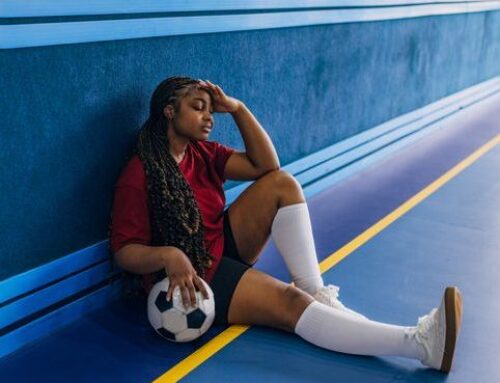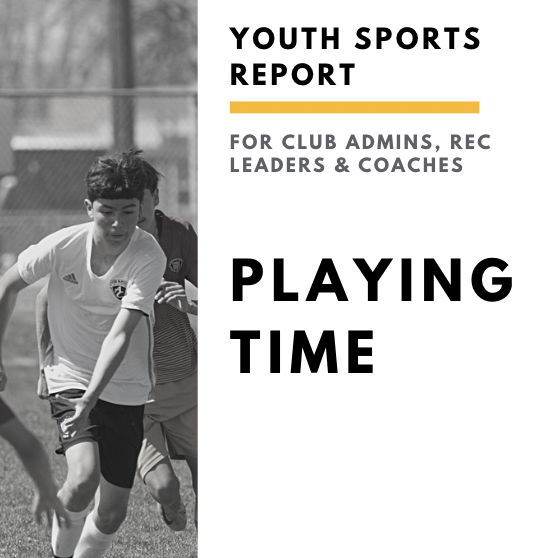Get our exclusive report. Download the iSport360 Club Switching Report Here – For Club Admins, Rec Leaders and Coaches.
10 Things to Practice Player Development
What can your club do to truly practice player development?
Does your youth sports club preach player development and follow through with its promises? Or does your club toss “player development” around as an alluring phrase to hypnotize parents into joining your organization?
If there is anything you should get from this article, it is to take player development seriously. And uphold it meticulously, as well as take radical action to ensure your players develop in a well-rounded fashion.
“Player development” is a buzzworthy slogan in the youth sports world that is widely broadcasted, yet rarely executed. Clubs that practice player development year-round and for the life of a child athlete’s career are few and far between.
What Is Player Development?
Let me first dive into what player development is not: It’s not about coaches and clubs.
Rather, player development focuses on the young human first. And then the construction of the complete player—one who is physically, technically, and tactically sound. Adding on to that, it is also one who is mentally resilient and prepared for the oscillations of life.
From the physical side of player development, are your athletes strong, powerful, fast, agile, and conditioned to withstand the demands of the game and a year-round schedule that is more rigorous than that of the pros?
Technically speaking, are your athletes sharp with sport-specific movements, especially under pressure and applied in a game situation? This could be a basketball player dribbling their way out of a double team, or a soccer player beating a defender one-versus-one, or a baseball pitcher throwing three strikes. Do you reinforce these skills weekly, and do you hold players accountable to practice on their own?
Tactical Corner
In the tactical corner, can they move off the ball, anticipate the next play, understand the role of their position, and think creatively without coaching cues from the sideline?
And looking at the mental side, are they able to pull themselves out of hardship, tackle adversity with poise, use nerves as fuel to perform at a high level, and be forgiving of themselves for their mistakes?
The physical, technical, tactical, and mental pieces perform an integrated dance when true player development is the focus of clubs.
If you are a coach who preaches an attacking formation, how do you expect players to run at top speeds off the ball and make lightning diagonal runs? They need the physical piece, too.
If you are a coach who preaches perfect passes without opposition, how do you expect players to pass and move under pressure? They need the tactical piece, too.
If you are a coach who preaches risk-taking with technical skills, how do you expect players to be confident in their approach if you berate them for their mistakes at training sessions? They need the mental piece, too.
If you are a coach who preaches sharp combination play, how do you expect players to be skilled on the ball if you don’t reinforce skill mastery at your training sessions? They need the technical piece, too.
To that end, it all matters.
Focus on Being a Great Coach
Coaches do their players a tremendous disservice when they fail to fill the player development buckets of physical, technical, tactical, and mental equally.
I understand that the noise of wins and rankings gets in the way, but we all need to remind ourselves daily why we coach: to help youth athletes become their best selves on and off the field.
Expounding further, this goes beyond sports and extends far into the long term: a college player lasts for a finite moment in time, but a human lasts longer—a human who can accept failure with ease, a human who can thrive in the competitive workforce, a human who can lean into creativity to grow something magical, a human who takes care of their health after sport ends.
Here are 10 things clubs should do to practice player development.
Refer out to Experts
This much I know: It takes an army to develop a player. A team coach, technical coach, and strength coach are just a few of the experts involved in the player development process—no one person can do it all. Sure, referring out to another niche expert might be a harsh reminder that you do not know it all, but don’t let it be a hit to your ego.
As an example, a coach referring out to a strength and conditioning professional to improve their team’s speed mechanics and ability to handle eccentric load is a step in the right direction. I have seen a few clubs do this, and these are the clubs that are respected for providing their players with not only value, but great care. Another initiative I have seen recently that guides players with the mental piece is a club reaching out to a sport psychologist to give a presentation on performance anxiety, and how to deal with failure.
Even if you do not make money or profit by recommending the strength coach, physical therapist, or sport psychologist down the street, you provide a tremendous service to your young player. Parents take notice too. When clubs and coaches invest in resources and realize it is valuable for the long run, even though they may cringe at the cost, everyone benefits. Most importantly, the young players blossom.
Have a Holistic-Purpose Sport Technology
Sport technology can be useful if applied properly, but it can be detrimental if it’s only invested in for the sake of having cool offerings to splash on social media. Clubs that have genuine intentions with sport technology examine the data first before looking at the likes on Instagram.
You need advanced technology for optimal player development. It can tell you valuable information about managing fatigue and adjusting training sessions, so your players perform at capacity. However, technology is useless if it is only used to take a photo of a leg sensor on a 10-year-old for Instagram, rather than having the coaching staff apply it. It is tantamount to buying a luxurious car without having a mechanic to maintain it and keep it functioning.
The same goes for youth sport technology: invest in it with the purpose of applying the data to tweak your pitch and gym sessions that training week, not for the sake of showing parents your club has more products than the club next door.
Don’t Focus on Wins and Rankings
Take it from a woman who recruits for college, wins and rankings matter far less these days. Of course, back when colleges traveled to showcases more and attended the top tournaments in the country, kids had to be on a team with a high ranking. But now?
More college programs operate under the ID camp model, where players travel to them, pay a fee, and get evaluated for 1–3 days. More college coaches are moving into this model because they do not want to fork out the travel expenses, they can stay at their home base, and the talent comes to them with checks in hand.
While a fraction of college coaches still go to top tournaments, it does not hurt to be on a winning team. However, it is no longer everything, nor is it a make-or-break factor.
Can these kids go to an ID camp and leave a remarkable impression upon the coaches? Do these kids know the game? Do these kids present all buckets of the total player—physical, technical, tactical, and mental? Moreover, can they apply their skills? Are they physically fit to handle the demands of competition and outrun other potential recruits? Are they mentally tough to prove themselves in a single day on campus?
If clubs focus on player development, players will show themselves well at ID camps. Is that not the end goal here?
Encourage Other Sports and Physical Activities
There are a plethora of coaches out there who remember that kids are kids, and they are meant to be exposed to a variety of movement, sports, and physical activities. This is not just from a physical development standpoint, either. These coaches realize that a variety of activities is good for a kid’s mental and social health, too.
A study from the American Journal of Sports Medicine shows that kids involved in multiple sports who participated in more games still experienced fewer injuries. Of course, I could list an archive of studies on the topic, but we all know the research is not new.
We also cannot forget that load monitoring plays a pivotal role here if a kid chooses to play one sport. Yet, most clubs don’t do the strength and conditioning piece, so how do we expect these kids to handle the chronic loads and recover effectively? The caveat is if kids opt to do a single sport, does the coach truly encourage fatigue monitoring? Do they incorporate strength, balance, spatial awareness, and other basic motor skills into their sessions?
Video 1 (here). Crawling is not just for elementary school kids, but for all athletes. The decision of how much and when is up to the coach, and that will vary based on needs.
It is a tough, yet fair question to ask, and it takes a little creativity and preparation from the coach’s end. Kids need a diverse palette of movement to build neural connections in their brain and enhance motor skills, so let us provide them with that.
Give Equal Playing Time
Clubs that give equal playing time to child athletes practice all of the components of player development all at once. Game play is the best way for kids to explore their sport beyond rehearsed practice sessions. When kids are on the field playing the sport they love or in the gym exploring movement, they are learning how to problem-solve, move, sprint, make mistakes, apply their skills, and more.
Video 2. Pull-ups are great for developing strength but don’t forget general monkey bar training. Having athletes complete straight sets is part of the training process and adding general climbing or pulling motions is essential for a complete athlete.
Work On Doing The Small Things Well
Going beyond learning the game through playing time, can you imagine what this does for a player mentally? Can you see them beaming with confidence? Or can you see them smiling when they are out there with their teammates? Can you see them shining with joy when they score a goal?
The coaches who realize that the local U10 tournament championship is trivial compared to the happiness of the kids are the ones doing player development right. The coaches who expose young ones to a lot of minutes, positions, and scenarios are the ones looking out for the longevity of their players.
Moreover, it pains me to see 8-, 9-, and 10-year-olds sitting on the bench discouraged, disoriented, and confused as the rest of their teammates are out there playing. What is worse is that these kids develop a nasty taste in their mouth for the game and wonder if they will ever be good enough.
Sure, the “better” kids’ parents might get mad that their 8-year-old’s team is not winning games, but I promise a college scholarship will not suffer because of this. Player development is a long-term process, and setting kids up for successearly by exposing them to the game as much as possible ensures they soak in an understanding of the game.
Clubs that provide equal playing time at the young ages understand it is paramount for kids to develop physically, technically, tactically, and mentally through equal playing time.
Guide Players Through College Recruiting
Following through on promises of college recruiting preparation is another way clubs practice player development. After all, most of these players and parents have the end goal of a college scholarship and evolving into an even better player after high school is over. This is the social piece of player development that clubs often overlook, and it’s the most critical.
As a college recruiter myself, it is easy to tell which athletes went into the process prepared and educated by their coaches. These are the players who reached out to us early, drafted an edited and professional email, and stayed in touched with us for feedback relentlessly. Sadly, most young athletes are not even taught how to draft an email, yet clubs promise college recruiting pathways for their players.
The clubs that walk the walk with college prep value their players’ long-term dreams to play at a high level.
Increase Players’ Strengths
The best coaches see the genius in their players and amplify their talents to bring them out during competition.
Reminding kids of their strengths consistently—what they bring to the collective group, their role on the team, and their talents—has a way of boosting confidence and hyping kids up. While it is important to work on weaknesses and instruct players on what they can improve, it is another thing to berate them, tell them they’re terrible, and not provide them with guidance on how to improve.
Not every kid will be the aggressive one. And not every kid will be the fast one. Not every kid will be the play-maker. Not every kid will have it all. But what coaches can do is hammer home to their players what their strengths are so they can further grow and nurture them.
Make Injury Prevention a Priority
The health of the players affects whether or not they can continue to develop. And clubs that blend in the physical piece of player development make injury prevention a priority. They execute dynamic warm-ups before training sessions and games. This will consistently reinforce strength and mobility work, and make it mandatory to stretch and recover after games.
The standard for injury prevention training is set by the coach, who creates a culture that requires doing the small things to stay healthy for the long haul.
It can be something as simple as motivating kids to buy an in-house pull-up bar:
Video 3 (here). Assisted pull-ups allow anyone to train at home. Having a pull-up bar at home reminds athletes and even coaches that training doesn’t need to be away from home to be effective.
Requiring players to keep a foam roller, mini band, and nutritious snack in their bag during tournaments also goes a long way.
Something as efficient as performing an on-field strength session that attacks all muscle groups of the body so kids continue to get stronger is also a good idea:
Video 4 (here). On the field, core work is easy and adding a ball to the equation enhances the training. Any athlete can benefit from this partner-assisted exercise.
You can also program maximal sprints with a long recovery to ensure kids are reaching top speeds during practices:
Video 5. Group speed training can be done with short races. You don’t need to sprint one at a time to get improvement in player speed; you just have to have a good plan ready for adjusting to what you see.
These are easy actions that the best clubs take to physically develop their players, and they need to be mandatory.
Foster a Safe and Inspiring Environment
It warms my heart to see coaches welcome their young players at every practice session with excitement, exuberance, and passion. Making kids feel important, loved, and valued the moment they show up to the field instills trust, and provides them with an escape from the stressors of daily life. Even it is something as small as putting a bow in your hair to match your young athletes during their sessions, it means the world to them that you are relatable and welcoming.
Video 6 (here). Lower level drills and games are fun for everyone, not just the athletes. Incorporate participation when you feel it enhances the learning process.
To that end, infuse practices with goofiness, laughter, smiles, and high-fives. The mental side of player development begins with providing your players with great care and putting them in an environment where they feel safe, pumped up to play, and welcomed.
I cannot for the life of me understand a coach who is emotionally abusive, makes kids cry, and yells and points in their faces. This is so incredibly far from player development because it ignores the most critical piece: the mental.
Building players up, giving them a sense of community, and ensuring they are comfortable the moment they arrive is key.
Promote Free Play and Creative Thinking
Seeing coaches get out of the way is refreshing because it allows kids to play, be autonomous, and enjoy the sport for what it is. Not only can they learn to be independent thinkers, they can tap into the creative corners of their brains to better flow along with the spontaneous nature of the game.
Stopping play every 10 seconds to bark out a coaching cue that goes in one ear and out the other can prove to do more harm than good for young ones, especially after they have been told what to do all day in school and by their parents.
Club Wide Free Play Nights
Club-wide free play nights are an excellent way to ensure kids run around uncoached and give them a break from the structured, rehearsed tactical drills. However, there needs to be more free play encouraged besides clubs having just a set night. This can start with the coach speaking to their players about weekly pick-up games in the neighborhood, educating the parents about why something like this is critical, or telling kids to create their own drill, skill pattern, or game each week.
As an example, my players came up with this awesome game of 1v1 dodgeball:
Video 7 (here). One-on-one or 1 v 1 doesn’t need to be actual soccer. Global athletic development is about competition and athleticism, not only sport-specific skills.
There were no instructions, rules, or limitations given. They were given a bag of dodgeballs and were free to create any game they desired. The result? They had a blast.
I understand that it is tough to bite your tongue and keep from sounding important and acting as the authority. I also understand it is hard to put the practice plan away and give kids your power. However, for the sake of developing their brains into magicians rather than robots, it is worth you just watching and staying quiet.
Every behavioral change from parents and players starts at the top—with clubs and coaches not only setting the expectation and sticking to it, but simply educating weekly and reinforcing the importance of creative play.
Make Player Development Your Standard
Player development is beautiful, but it will come with costs, which means wins might suffer, parents might criticize, and money might be lost. But if player development is what clubs preach—and value—they will make it happen. I have seen few walk the walk, so let us be grateful for those who do not use player development as a sexy catchphrase, but rather, as a standard practice.
Click here for more information on iSport360.
Learn more or request a demo of our youth sports software that is helping teams improve communication, organization and player development.
October 25, 2021





